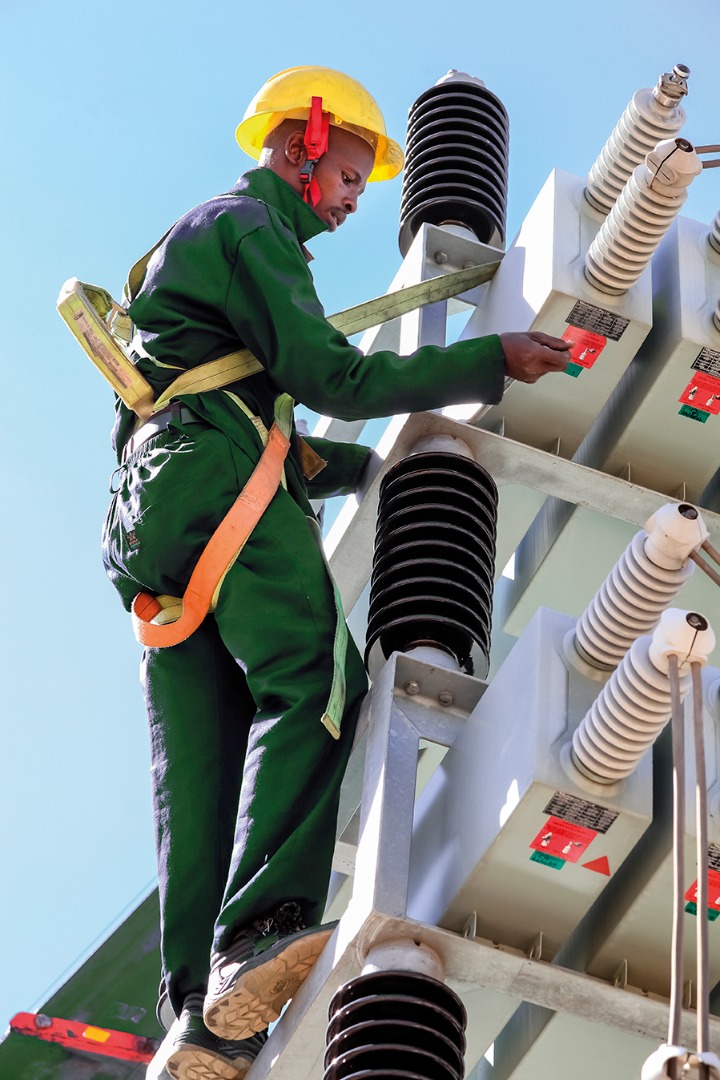The Deputy Prime Minister, Minister of Transport, Communication Routes and Opening Up, Jean-Pierre Bemba, accompanied by the Ministers of Infrastructure, Alexis Gisaro, and of Portfolio, Jean-Lucien Busa, as well as representatives of the Ministers of Finance, Planning and Justice, chaired an important meeting this morning in the large Council of Ministers room at the government hotel. The meeting focused on the development and revival of the Lobito Corridor railway with a significant delegation from the U.S. government’s Partnership for Global Infrastructure and Investment (PGI). The U.S. Government presented to the Congolese government the strategic importance of reviving and developing the Lobito Corridor and working together on related and other projects in the Democratic Republic of Congo.
Accompanied by the U.S. Ambassador to Kinshasa, Lucy Tamlyn, the Acting Special Coordinator for the Partnership for Global Infrastructure and Investment (PGI) stated that on behalf of the U.S. Government and President Joe Biden, her delegation is in the Democratic Republic of Congo to work towards the development of the Lobito Corridor.
“We had an important meeting. I am here on behalf of the U.S. government and President Biden, as part of the flagship investment and infrastructure program. We are here to work together with the government of the Democratic Republic of Congo in general regarding the development of the Lobito corridor. We have been working with the government on the Lobito corridor project for quite some time, but it’s not just the railway that interests us,” said Helaina Matza.
“During this meeting, we discussed other projects that are linked to this project, particularly mines, especially energy projects. So in this meeting, we saw together how these other projects are interconnected,” stated the Acting Special Coordinator of the PGI Partnership, specifying that the strong Congolese Government delegation mentioned several other infrastructure and energy projects that require funding.
Present at this meeting of capital and strategic importance, the Coordinator of the Support and Monitoring Unit for Transport Corridor Programs and Activities, Roger Te-Biasu, indicated that the Congolese Government, at the proposal of the U.S. Government, is called upon to present a project for which the United States, through PGI, will mobilize financial resources.
“The Americans came to propose a partnership to the Congolese government in the framework of the development of the Lobito corridor. And so, they asked the government to propose one, two, three, four flagship projects on which, together, they can study to see to what extent the U.S. government can mobilize funding and propose partnerships to carry out these projects within the framework of the development of the Lobito corridor.”
As a semi-landlocked country, the DRC is called upon to multiply exit routes for the export of the various minerals it produces. The Lobito Corridor, inherited from Belgian, Portuguese and English colonization, is a railway including 3 countries, namely; Zambia, Angola and the Democratic Republic of Congo. In Zambia and Angola, the USA has made much progress in the work to revive this Corridor and now it’s the DRC’s turn, revealed Mr. Roger Te-Biasu.
“As you know, we, the Democratic Republic of Congo, are a semi-landlocked country. And the southeastern part of the country, where Kolwezi is, which needs to connect with the Lobito railway, which is in Angola, is more than 425 kilometers. The state of this infrastructure, the railway, the roads, is in a pitiful state. And the U.S. government is seeking to revive activities within the framework of the Lobito corridor, grouping the three countries, Angola, DRC and Zambia. They have funded projects in Angola. They have also funded projects in Zambia. And now it’s the DRC’s turn.”
On the Lobito Corridor, “the flagship project on the Congolese Government side remains the SNCC railway, whose section is 427 kilometers from Kolwezi to Dilolo, on the border with Angola. And this railway is not yet operational. It requires investment in rails, in locomotives, for it to be operational, to be easily connected to the one being done on the Angolan side. And so it’s up to the government to make the decision. Is it a public-private partnership? Is it a concession? Is it an equity participation?”
CELLCOM/ VPM-MTVCD






